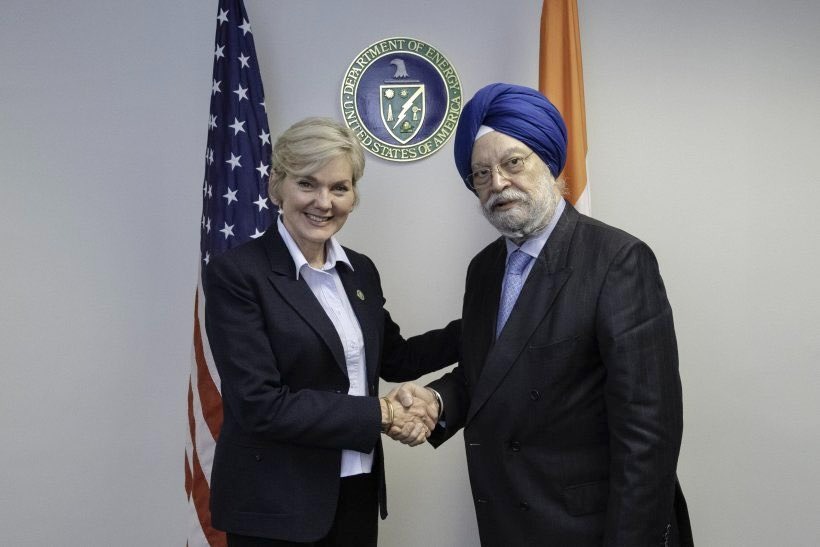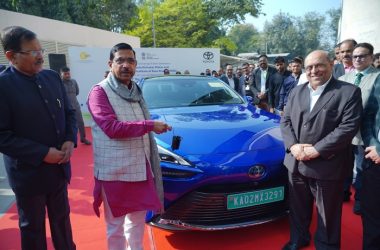In a significant step toward advancing global clean energy efforts, U.S. Energy Secretary Jennifer Granholm and Indian Minister of Petroleum and Natural Gas Hardeep Singh Puri convened the Strategic Clean Energy Partnership (SCEP) Ministerial in Washington, D.C. Both nations reaffirmed their commitment to driving clean energy innovation, bolstering energy security, and facilitating a just transition to sustainable energy systems.

Key achievements highlighted in the meeting include progress in sectors such as renewable energy, hydrogen technology, energy storage, and decarbonization. A notable development was the official launch of the Renewable Energy Technology Action Platform (RETAP), aimed at spearheading initiatives in hydrogen production, long-duration energy storage, and offshore wind energy.
The ministers also celebrated collaboration on India’s National Centre for Hydrogen Safety and acknowledged the success of the 2nd International Conference on Green Hydrogen. Both countries are accelerating efforts to deploy green hydrogen across sectors, including transport, where projects for hydrogen-powered buses and heavy equipment are already underway.
A joint focus on scaling renewable energy storage, particularly with advanced battery and pumped storage solutions, marked a major milestone in enabling reliable, grid-integrated renewable energy. The launch of the Energy Storage Task Force aims to address challenges such as supply chains and policy frameworks, with active projects already underway in Indian states like Assam and Haryana.
Transport electrification was another major topic of discussion, with an emphasis on India’s ambitious deployment of 10,000 electric buses under the PM eBus Sewa scheme. Both nations are also collaborating on medium and heavy-duty vehicle electrification to support e-freight and sustainable transport solutions.
The Indian Railways’ net-zero emissions goal by 2030 received commendation from both sides, with the U.S. offering continued support for renewable energy procurement and efficiency measures. Furthermore, the joint efforts toward developing Sustainable Aviation Fuel (SAF) marked a new frontier in clean energy innovation, with both countries pushing for market growth, R&D, and fuel certification.
Decarbonization of high-emitting sectors such as industry and buildings was underscored, alongside the need for super-efficient appliances and affordable cooling systems, which would contribute to supply chain diversification and sustainability. Additionally, carbon capture, utilization, and storage (CCUS) emerged as a vital area of collaboration, with both countries engaging stakeholders in advancing this technology.
Both the U.S. and India praised the public-private sector dialogues that have helped shape policies, lower technology costs, and secure investments in clean energy markets. A significant example was Indian company Waaree’s investment in a 3GW solar module manufacturing facility in Texas, signaling stronger commercial ties in the energy sector.
As the world faces unprecedented climate challenges, both nations recognized the need for enhanced cooperation in building resilient, diverse, and secure clean energy supply chains. The U.S.-India Strategic Clean Energy Partnership is set to pave the way for sustainable energy transitions and a more climate-resilient future for both countries.






